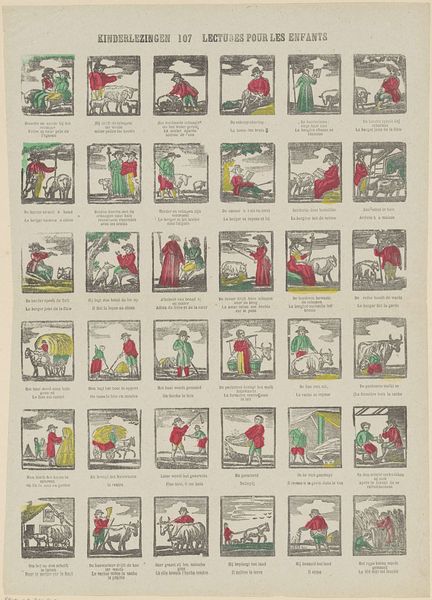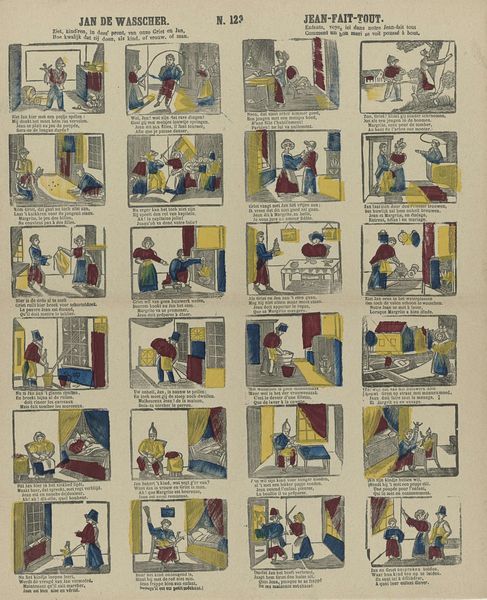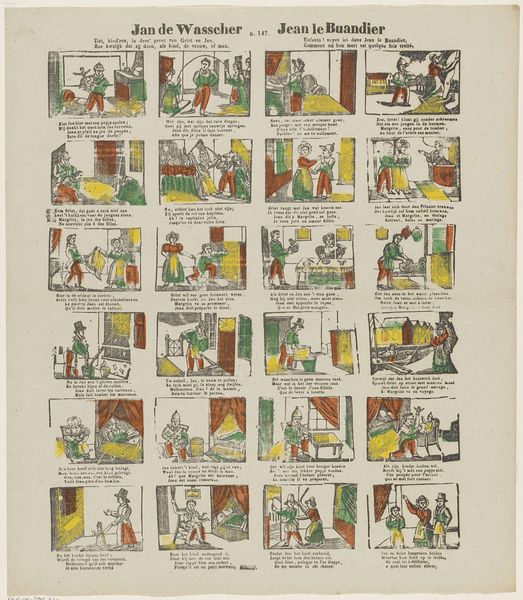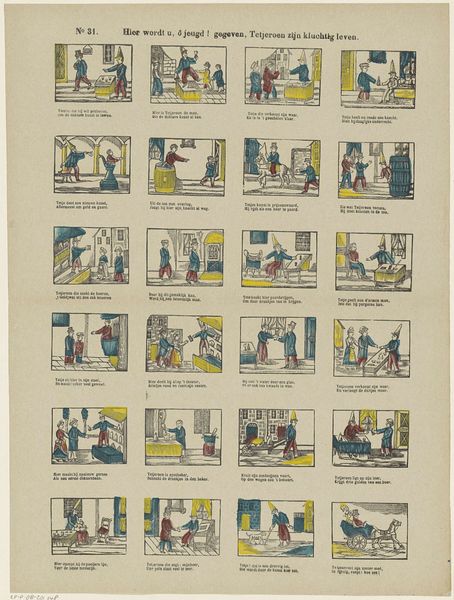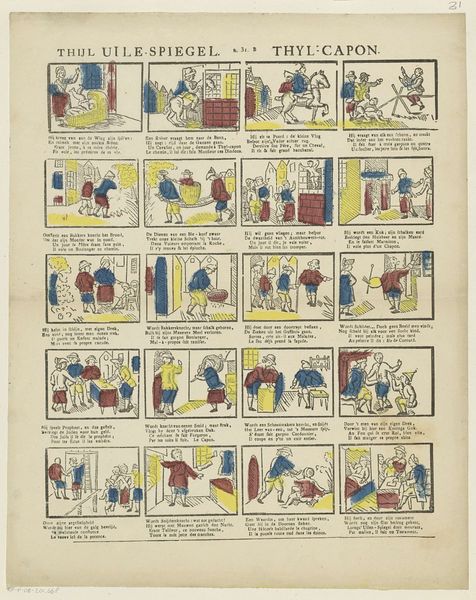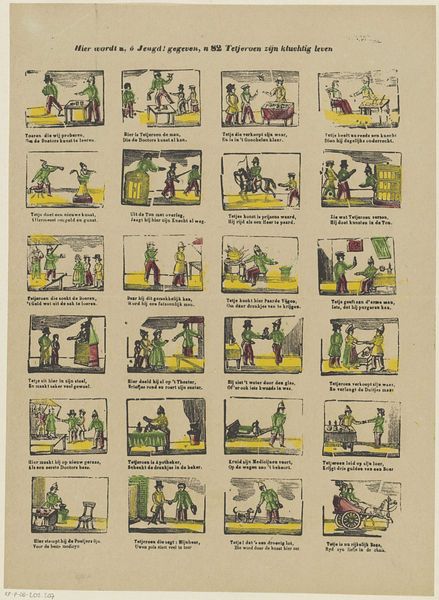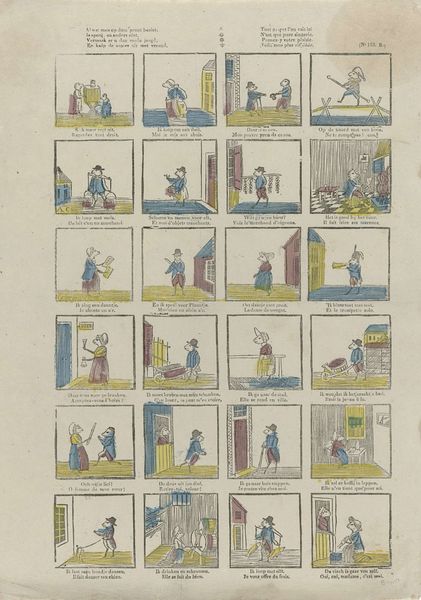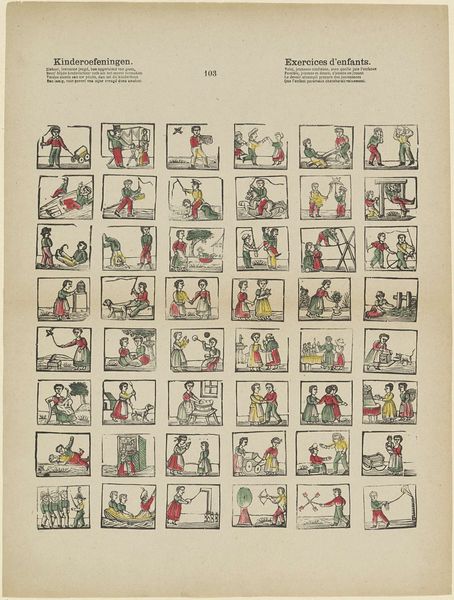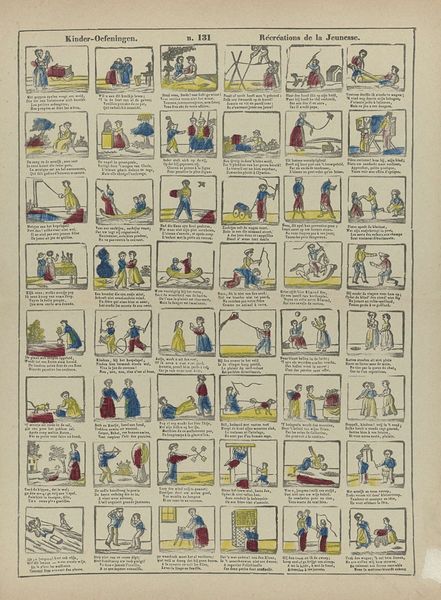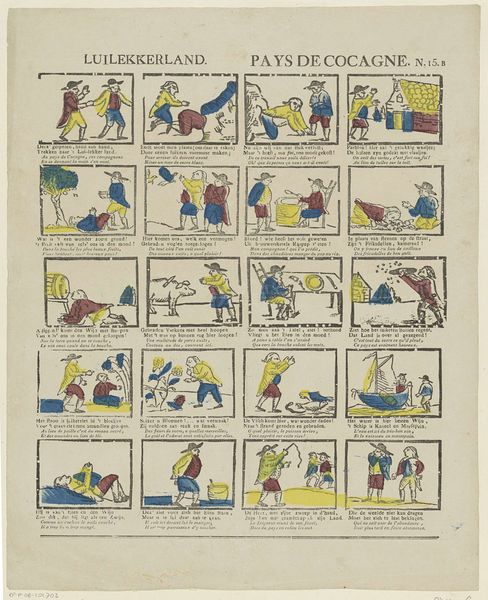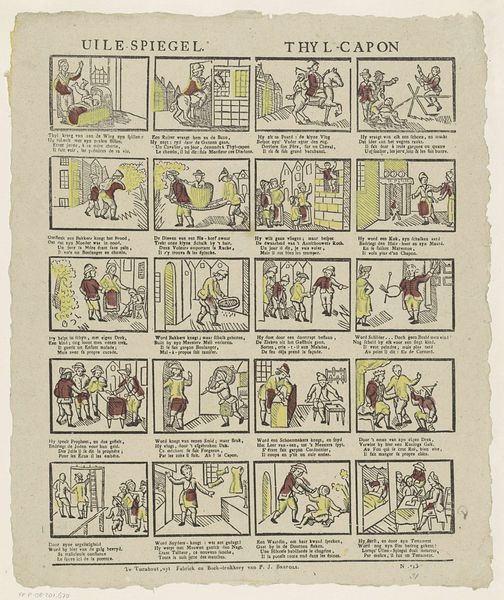
Onderscheiden ambachten en bedryven / Divers arts et métiers 1800 - 1833
0:00
0:00
print, engraving
# print
#
genre-painting
#
engraving
Dimensions: height 416 mm, width 331 mm
Copyright: Rijks Museum: Open Domain
Curator: Immediately, I'm struck by the print's charming, almost storybook feel. It's like a little comic strip of 19th-century trades. Editor: This is "Onderscheiden ambachten en bedryven / Divers arts et métiers" by Philippus Jacobus Brepols, created between 1800 and 1833. The Rijksmuseum holds this engraving, and it neatly encapsulates the era's fascination with documenting the practical arts. Curator: Documenting, yes, but with a playful, almost naive hand. The colours are bold, primary… there’s a real vibrancy despite what must’ve been quite painstaking work to engrave it. It makes me think of the daily hustle, the rhythm of work from so long ago, now just a silent dance preserved on paper. Editor: Notice how Brepols uses compartmentalization, breaking down each craft into its own isolated frame. The composition guides the eye, encouraging us to examine each scene as an individual narrative. Semiotically, these boxes also separate work practices to define social classes and boundaries. Curator: Perhaps… I’m not sure if it’s *quite* so clinical! I imagine it as an ode, a celebration of the trades—cobblers, weavers, all those indispensable folk building the world around them with their hands. What gets lost in an era of mechanization and specialization! Editor: Indeed, you make a relevant point. Yet, observe also the details; a semiotic chain appears to run through this print. Colors are selected sparingly for their specific function and form a symbolic structure of understanding the economic framework present. For example, blue tends to reference creation. Curator: Creation through action… a romantic interpretation perhaps but these images really resonate and offer an endearing quality. Looking closely now I can see what feel like human stories— a father teaching a child, two tradespeople deep in animated chatter. It humanises industry so personally. Editor: Let us agree to conclude then that within Brepols’ arrangement lies an enchanting, yet instructive vision of industrious existence in the past. A view of creation by hands, for hands. Curator: It’s more like stepping into someone's slightly idealized, much-loved memory, a world where everyone has their purpose, their place in the grand design. A nostalgic nod, really.
Comments
No comments
Be the first to comment and join the conversation on the ultimate creative platform.


